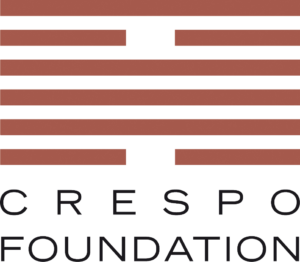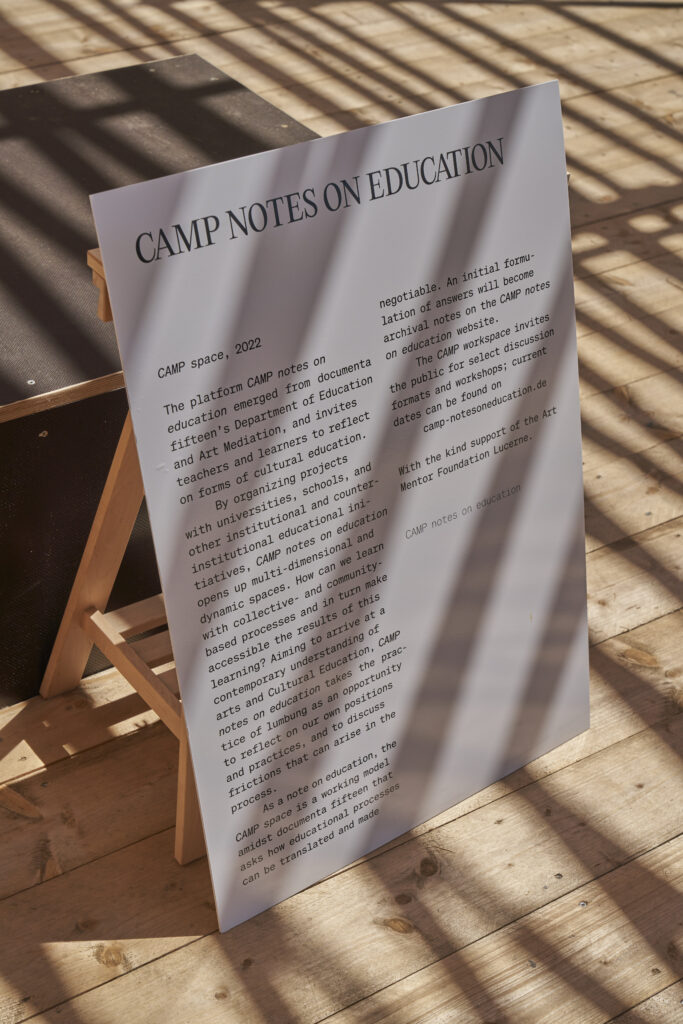
Arts Educators in Residence invites practitioners from the fields of Arts Education to reimagine and co-create alternative, regenerative strategies and methods in Arts Education during documenta fifteen.
One of the manifestations of CAMP notes on education will unfold through the Arts Educators in Residence program, inviting practitioners form the fields of Arts Education to Kassel for one of three residency periods of 4 weeks each taking place during the 100 days of documenta fifteen.
Fellows are invited to share their approaches, develop pedagogical frameworks and realize their own educational projects during their stay. Arts Educators in Residence maintains the goal to provide a liminal space for a multiplicity of perspectives, autonomous, non-institutional, embodied and intergenerational forms of collective learning and re-imagine educational futures.
CAMP notes on education encourages an exchange of knowledges, approaches, and experiences among participants and nurture collective capacities that appear at the intersection of practice and communing. This is an invitation to connect to experiences and ponder upon new questions, critical and cross-cultural inquiries that interconnect with both practical and theoretical threads. The fellows will work together to reflect collectively on their practices and evaluate their actions in collaborative structures.
Text credits: Esther Poppe with support of vinit agarwal and Raffael Tobias Streicher
CAMP notes on education wishes to acknowledge the valuable support of the Crespo Foundation.
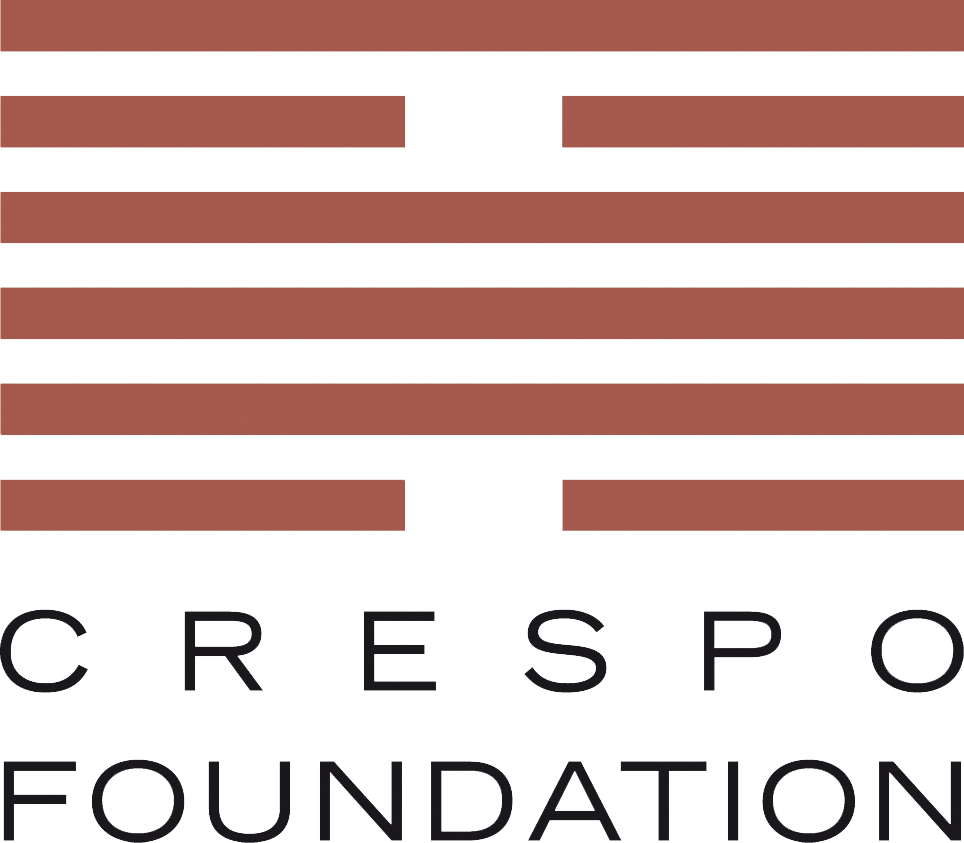
Cover Image: Arts Educators in Residence, Slot 2 (c) Esther Poppe.
Diary
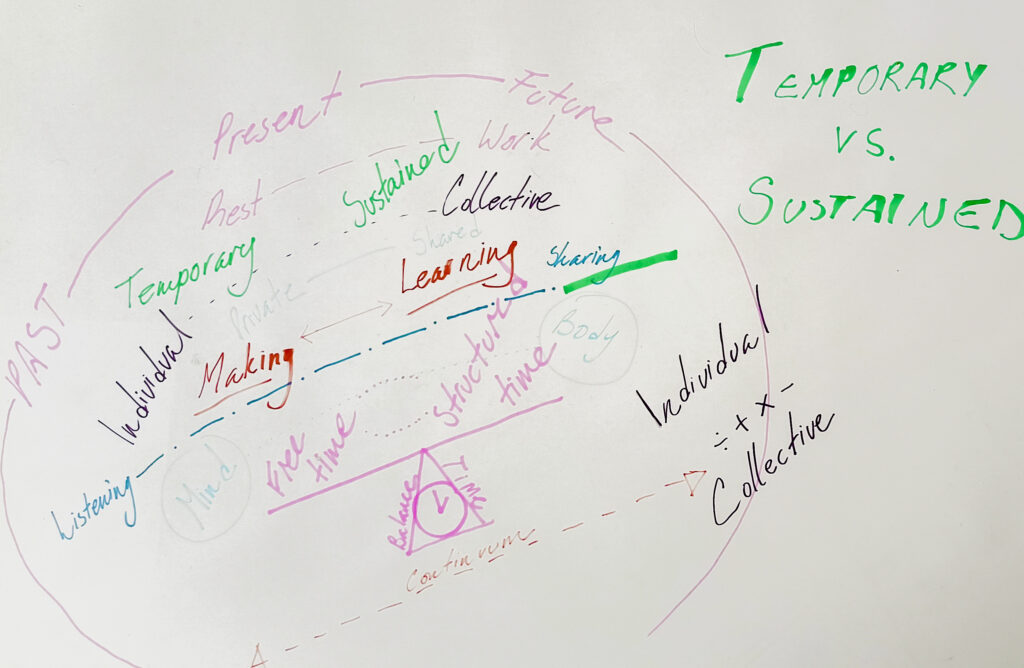
This clustering of questions was perceived as a guiding structure to open a space of thought allowing to specify and further elaborate on collective practices and learning processes. They were put together in an attempt to define parameters and set the tone of the Arts Educators in residence program happening in Kassel, in 2023. Their status is fragmented, incomplete, the perspectives and point of reference on which they are based are limited. This allows for continuous adjustment, revisioning and transforming. Feel free to adapt, broaden, specify and amplify them.
- How do you come together in your practices – collectively creating sites of unlearning, sharing tools within community-building and environments of gathering that can (possibly) merge into the cultural, social, political, and economic spheres?
- What kind of radical educational practices and experiments are you involved in or inspired by right now?
- How do you reflect and reengage in reclaiming the knowledge systems and cultural imaginations that counter what capitalism and patriarchy have sought to be erased under the conditions of modernity and coloniality?
- Under your respective geopolitical, economic and social conditions how do you work against extractivism, unequal distribution and Right to Land claims, labor relations, productivity and exploitation? How do you implement liberatory, empowering practices and forms of resistance as collective action?
- How do you work through / work with structures, culture, language, class – creating learning environments where different temporalities and voices come together?
- How do socio-historical paths, language politics, aesthetics and sociocultural modalities and forms of institutionalization impact and challenge the work you do?
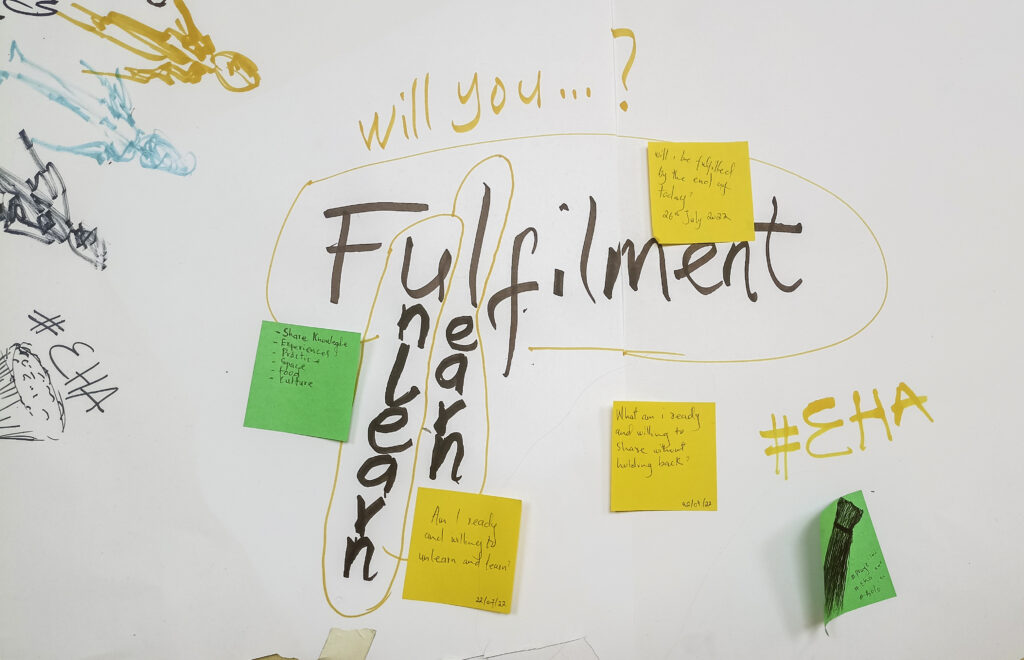
- Within your working / collective structures, how do you define roles, discuss self-conceptions, critical self-reflections and positionalities?
- How do you negotiate dependency and autonomy within institutional and community-based working environments? How are institutions present in your practices? How do you move beyond the walls of the institution?
- How do activist and political works of communing, refusal and modes of civil disobedience assist you in formulating counter-proposals and alter your practices?
- Does the addressal of institutional racism, structural violence, xenophobia, and uprising of right-wing politics and ideology form the core of your educational practices? If so, in which ways / forms / care do you enact this in your practices?
- How does care / care-work, community-strengthening and emancipatory aims manifest in your practices, valuing the contributions of everyone’s presence?
- How do your practices both critique the existing educational systems and cultivate new practices that refuse individual subjectivities?
- How does healing, reconciliation, reconnecting, regenerating, and ancestral knowledge as an ongoing recognition open up in your practices?
- How do you reflect and stimulate interdisciplinary, intersectional, situated and relational approaches in your practices?
- How do you make learning about disability, ableism and access part of your ongoing work? What are the ways in which your practices are disrupting ableism and centering on the complexity of disability culture?
- How do you embrace memory, the collective body or embodied memories, for example living archives in your practices?
- How do you re-consider the role of the body: in its sensory, somatic situatedness, in rethinking corporality, in raising crucial questions about bodies and persons in different spaces, in delinking the “mind-body” split? How does this materialize in your collective practices? Feel welcome to elaborate on theater, performance and dance-related practices?
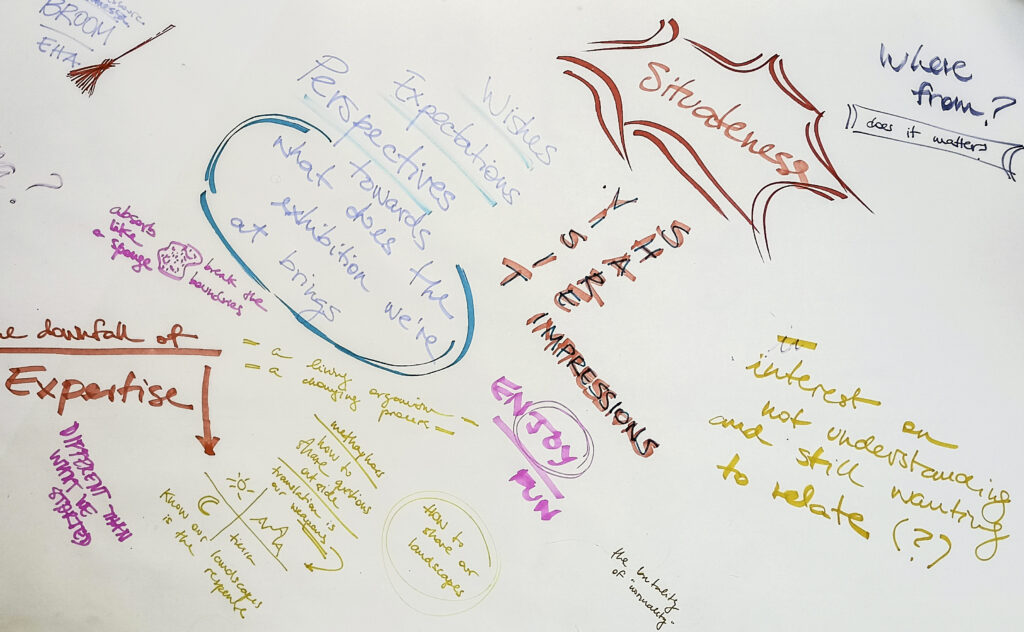
- How do your practices create and strengthen critical dialogue, action and change in and through music, theater and dance education as a community-building tool?
- How do you address gender-specific, Feminist, Queer, Indigenous perspectives and decolonial emancipatory practices in your work and practices?
- How do you work together with other educators to engage, encourage and create awareness on knowledge hierarchies, authoritarianism and power asymmetries to allow for critical reflections of power?
- How do you address problems of collectivizing the knowledge in its current forms – namely the categorization, hierarchies, accessibility and absences in libraries, archives, faculties and facilities in various educational sources and references?
- What future of education processes do we want to co-create? Which do you want to leave behind? What collective vision do you want to plant and leave behind for art education/education?
- What are the challenges and opportunities of reimagining educational situations in a time of (constant) crisis?
- How do your practices critically explore and deconstruct dominant narratives, formalized knowledge(s), concepts or Western canons & legacies and educational colonial paradigms?
- What forms of ecological, alternative economies, sustainable, cultural and social regeneration do your practices strive to nourish and implement?
- What methods of assembling, translation, research, evaluation and reciprocity do you practice collectively?
- Within which networks, communities or initiatives are your practices located? In which formations do you come together and expand togetherness?
- What shared knowledge(s) and skills are emerging in your collective practices? This can be thought of in multiple ways, media or formats such as festivals, workshops, performances, books and print publishing, films, computational or software development workshops, study groups, walks, gardening projects, radio shows, community events. How do you go about establishing shared community policies, tools and accessibility?
- In opening up space for participation how do you negotiate between self-determination, autonomy, the sharing of experiences and creating resources of solidarity?
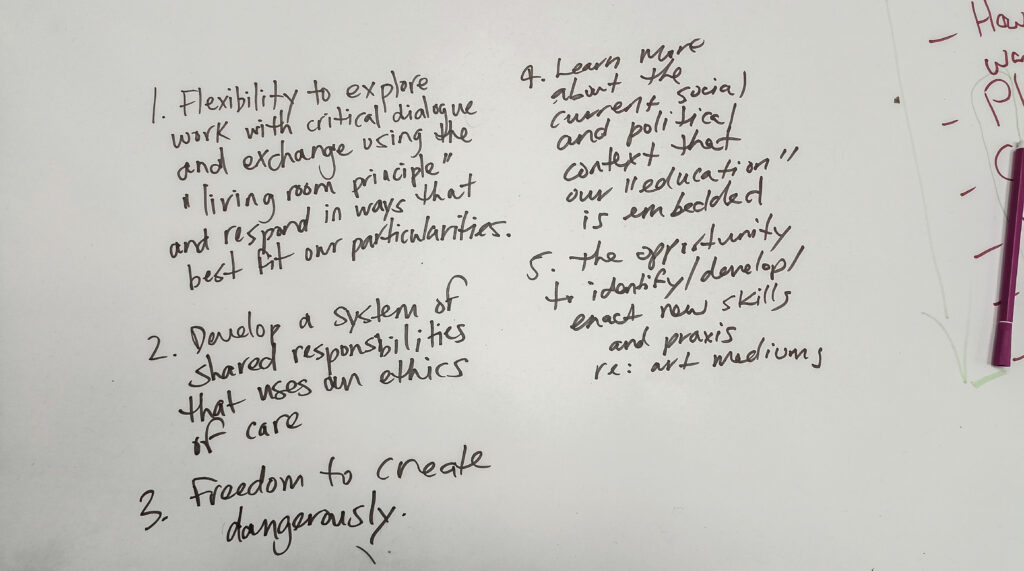
This set of questions was conceived and put together by Esther Poppe with the support of vinit agarwal.
Title images: #EHAcollective harvest during a workshop Slot2
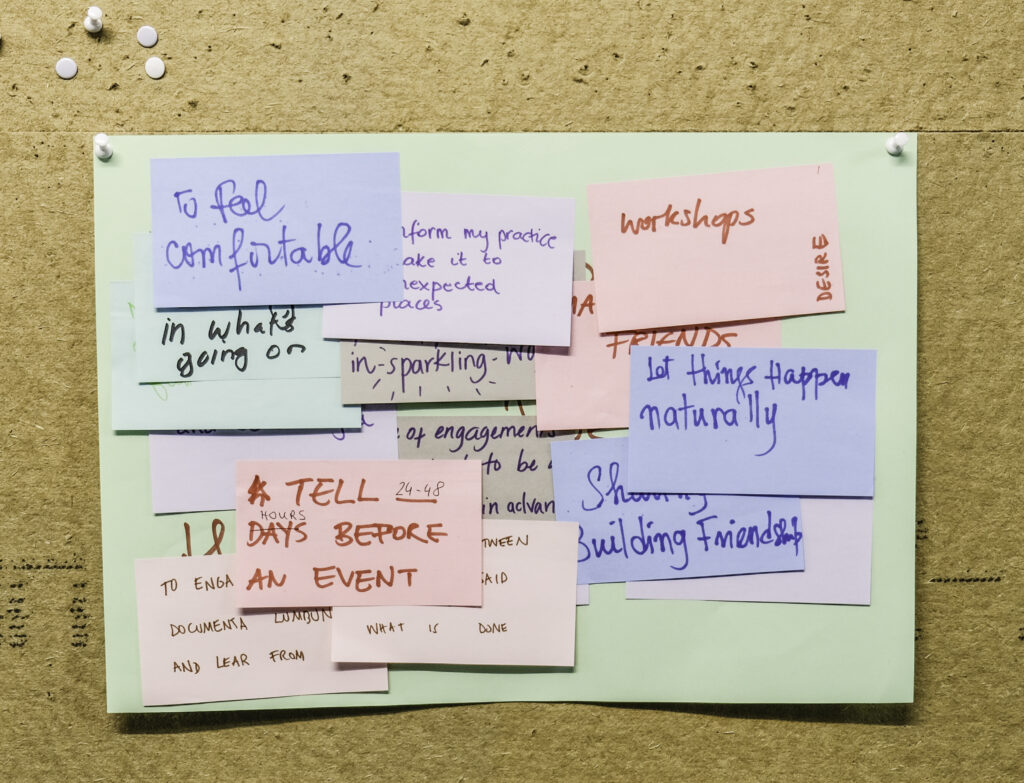
From August 29th to September 25th, the last slot of fellows worked on summarizing the experience in its attempts to question how we negotiate dependency and autonomy within institutional and community-based working environments. How are institutions present in our practices? How do we move beyond the walls of the institution and coexist within horizontal, non-hierarchical structures that are open to a non-homogeneous, inclusive, and collaborative environment?
Thank you to all of our fellows:
Anita Wolska
Bruno Diomaye Faye
Clara Laila Abid Alsstar
Dieynaba Sarr
Gharahshir Nargol
Marilia Arantes Loureiro
Nandy Nilanjana
Putra Hidayatullah
Wangũi wa Kamonji
Yasamin Ghalehnoie
Title image: wall image from a workshop, image: the fellows of Arts Educators in Residence listed above, 2022
TOGETHER – workshop by Ange Arthur Koua

Participants of the workshop ‘TOGETHER’ in front of the collective patchwork at Hafenstrasse 76. Photo: ©Sello Majara, 2022.
EN
‘TOGETHER’ is a workshop including a performance by Ange Arthur Koua, orchestrated by himself and several outside volunteer participants including those from the CAMP notes on education program. This experience is an invitation to live together and to accept the other around a common ideal. Building, accepting and living together through the construction of a common work, a work that will be in its entirety the crossing of several stories and experiences lived through textiles.
Indeed, the textile from our clothes ”our second skin”, is the accessory that we choose to accompany us everywhere according to our activities. The clothing, once used, is often an indicator of personality, a social belonging …”To expose its clothing is to expose itself in some way”.
In certain communities in Africa for example, women, at a certain moment of their life, make patchworks composed of the remains of loincloths (wax) that they used throughout their youth. This patchwork, called “N’ZASSA,” is very often an indicator of social success testified to by the quality and diversity of the pieces of loincloths which compose it. The textile used is thus a piece of evidence, a witness of moments of life of each individual. Clothing receives and records the memory of our journey.
The crossing of these different pieces of evidence is significant on several levels: On the biological level, assembling these pre-worn clothes is also crossing the DNA of their wearers through not only the sweat generated by the efforts and stress contained in these clothes, but also the prints and other marks which have witnessed daily activities.
On a spiritual level, in reference to the origins of Ange Arthur Koua who comes from a people of West Africa called the Akans (settled mainly in Ghana, Ivory Coast and Togo), this patchwork is the crossing of several souls. For the Akan, each piece of clothing carries the soul of the person who owned it before.
The performative aspect of the workshop
This participative activity is an opportunity for people from different origins to stage themselves around a common goal: to meet, to talk, to work together according to a common process. It also presents to the community the result of work in the form of a performance. This presentation made by volunteers is the symbol of an approval of this work of union like an artist (one person) coming out of his studio to present his work to his community.
In Ange Arthur’s creative process, he always includes an aspect that requires a presentation, no doubt an influence and nod to his culture and origins. In most important moments in African communities presentations are made taking the form of a march or a procession in the villages with initiates or often even the whole population to present either a new king, a new birth, or a new sacred object…
In short, TOGETHER responds to an ideal of life through a common language whose alphabet is made up of various experiences grouped together in a single work.
FR
‘’TOGETHER’’ est un atelier incluant une performance monté par Ange Arthur Koua, orchestré par lui-même et plusieurs participants extérieurs volontaires dont ceux du programme CAMP notes on education. Cette expérience est une invitation au vivre ensemble et a l’acceptation de l’autre autour d’un idéal commun. Bâtir, s’accepter et à vivre ensemble a travers la construction d’une œuvre commune, une œuvre qui sera dans son ensemble le croisement de plusieurs histoires et expériences vécus à travers des textiles.
En effet, le textile issus de nos vetements ‘’notre deuxième peau’’, est l’accessoire que nous choisissons pour nous accompagner partout selon à la nature de nos activités. Le vêtement déjà utilisés est souvent un indicateur de personnalité, une appartenance sociale …‘’Exposer son vêtement, c’est s’exposer en quelque sorte ‘’
En Afrique par exemple, dans certaines communautés, les femmes, a un certain moment de leurs vie confectionnent des patchworks composés des différents restes de pagnes (les wax) qu’elles ont utilisées tout au long de leurs jeunesses, ce patchwork appelé ‘’N’ZASSA’’ est très souvent un indicateur de réussite sociale témoigné par la qualité et la diversité des morceaux de pagnes qui le compose. Le textile utilisé est donc une pièce à conviction. Témoin de moments de vie de chaque individu, le vetement reçoit et enregistre des informations qui son la mémoire de notre parcourt.
Le croisement de ces différentes pièces à convictions est significatif à plusieurs niveaux. Sur le plan biologique, assembler ces vetements qui ont servis à des personnes et qui gardent encore leurs traces, c’est aussi croiser les ADN de ces personnes à travers la sueur générée par les efforts, le stresse … contenue dans ces vêtements, mais aussi les empreintes et autres marques témoins de leurs activités quotidiennes. Sur le plan spirituel, en référence aux origines de Ange Arthur Koua qui est issue d’un peuple de l’ouest de l’Afrique appelé les akans (installé principalement au Ghana, en Côte d’Ivoire et au Togo). Ce patchwork est le croisement de plusieurs âmes. Car pour l’akan chaque vêtement porte l’âme de la personne qui l’a possédé ultérieurement.
L’aspect performatif du workshop
Cette activité participative est l’occasion pour des personnes de différentes origines de se mettre en scène au tour d’un but commun, se rencontrer, se parler, travailler ensemble selon un processeur commun. Mais aussi de présenter à la communauté le résultat de leur travail sous forme d’une performance. Cette présentation réalisée par des volontaires est le symbole d’une approbation de ce travail d’union. Comme le ferai un artiste (une seule personne) qui sort de son atelier pour présenter son travail à sa communauté.
Dans le processus de création de Ange Arthur, il ouvre toujours un aspect qui nécessite une présentation. Sans doute une influence et un clin d’œil à sa culture et ces origines, car dans la plus part des moments importants dans les communautés africaines des présentations sont faites parfois sous forme de marche, de procession dans les villages, avec des initiés ou souvent même toute la population pour présenter soit un nouveau roi, une nouvelle naissance, un nouvel objet sacré …
En somme, TOGETHER répond à un idéal de vie a travers un langage commun dont l’alphabet est constitué de diverses expériences regroupées dans une seule œuvre.
DE
„TOGETHER” ist ein Workshop mit einer Performance, der von Ange Arthur Koua inszeniert und von ihm selbst und mehreren freiwilligen Teilnehmer*innen, darunter auch CAMP notes on education, geleitet wird. „TOGETHER“ ist eine Einladung zum Zusammenleben und zur Akzeptanz des Anderen um eines gemeinsamen Ideals willen.
Zusammen arbeiten, sich gegenseitig akzeptieren und gemeinsam leben durch die Konstruktion eines gemeinschaftlichen Werkes – eines Werkes, das in seiner Gesamtheit die Verwebung verschiedener Geschichten und Erfahrungen ist, die mit und durch Textilien gelebt werden. Die Textilien, die aus unserer Kleidung – “unserer zweiten Haut” – entstehen, sind das Accessoire, das wir wählen, um uns je nach Art unserer Aktivitäten überall hin zu begleiten. Die bereits getragene Kleidung ist oft ein Indikator für die Persönlichkeit, die soziale Zugehörigkeit… : “Wer seine Kleidung ausstellt, stellt sich in gewisser Weise selbst aus”.
In einzelnen afrikanischen Gemeinschaften beispielsweise fertigen Frauen zu einem bestimmten Zeitpunkt ihres Lebens Flickenteppiche an, die sich aus Resten von Lendenschurzen (Wachs) zusammensetzen, die sie während ihrer Jugend getragen haben. Dieser “N’ZASSA” genannte Flickenteppich ist oft ein Indikator für sozialen Erfolg, der durch die Qualität und die Vielfalt der Lendenschürze, aus denen er besteht, belegt wird.
Das verwendete Textil ist somit ein Beweisstück. Als Zeuge von Momenten im Leben eines jeden Individuums empfängt und speichert die Kleidung Informationen, die das Gedächtnis unserer Reise bilden.
Die Kombination dieser verschiedenen Zeugnisse ist auf mehreren Ebenen von Bedeutung: Wenn wir diese Kleidungsstücke zusammenstellen, die von Menschen genutzt wurden und immer noch ihre Spuren tragen, kreuzt sich auf biologischer Ebene die DNA dieser Menschen durch den Schweiß, der in diesen Kleidungsstücken aufgrund von Anstrengung und Stress… diesen Kleidern anhaftet, aber auch durch Abdrücke und andere Spuren, die von ihren täglichen Aktivitäten zeugen. Auf spiritueller Ebene ist dieses Patchwork eine Kreuzung mehrerer Seelen. Ange Arthur Koua stammt von den Akan, einer westafrikanischen Gemeinschaft, die heute hauptsächlich in Ghana, an der Elfenbeinküste und in Togo lebt. Für die Akan trägt jedes Kleidungsstück die Seele der Person, die es einst besessen hat.
Der performative Aspekt des Workshops
Diese partizipative Aktion ist eine Möglichkeit für Menschen unterschiedlicher Identitäten, sich für ein gemeinsames Ziel zu organisieren, sich zu treffen, miteinander zu sprechen und auszutauschen und an einem gemeinsamen Prozess zu arbeiten. Aber auch, um der Öffentlichkeit das Ergebnis ihrer Arbeit in Form einer Performance zu präsentieren. Diese Präsentation, die von Freiwilligen* durchgeführt wird, ist das Symbol für die Anerkennung dieses gemeinschaftlichen Werks: wie eine* Künstler*in, die* ihr* Atelier verlässt, um das Werk der Gemeinschaft vorzustellen.
In Ange Arthurs kreativem Prozess eröffnet er immer wieder Momente, die eine Präsentation erfordern: sicherlich ein Einfluss und eine Anspielung auf seine Kultur und Herkunft, denn viele wichtige Momente des Zusammenkommens werden in westafrikanischen Gemeinschaften in Form eines Marsches, einer Prozession in den Dörfern, mit Eingeweihten* oder oft sogar der gesamten Bevölkerung präsentiert, um entweder einen neuen König, eine neue Geburt, einen neuen heiligen Gegenstand… zu präsentieren.
TOGETHER antwortet also auf ein Lebensideal durch eine gemeinsame Sprache, deren Alphabet aus verschiedenen Erfahrungen besteht, die in einem vereinten Werk zusammengefasst sind.
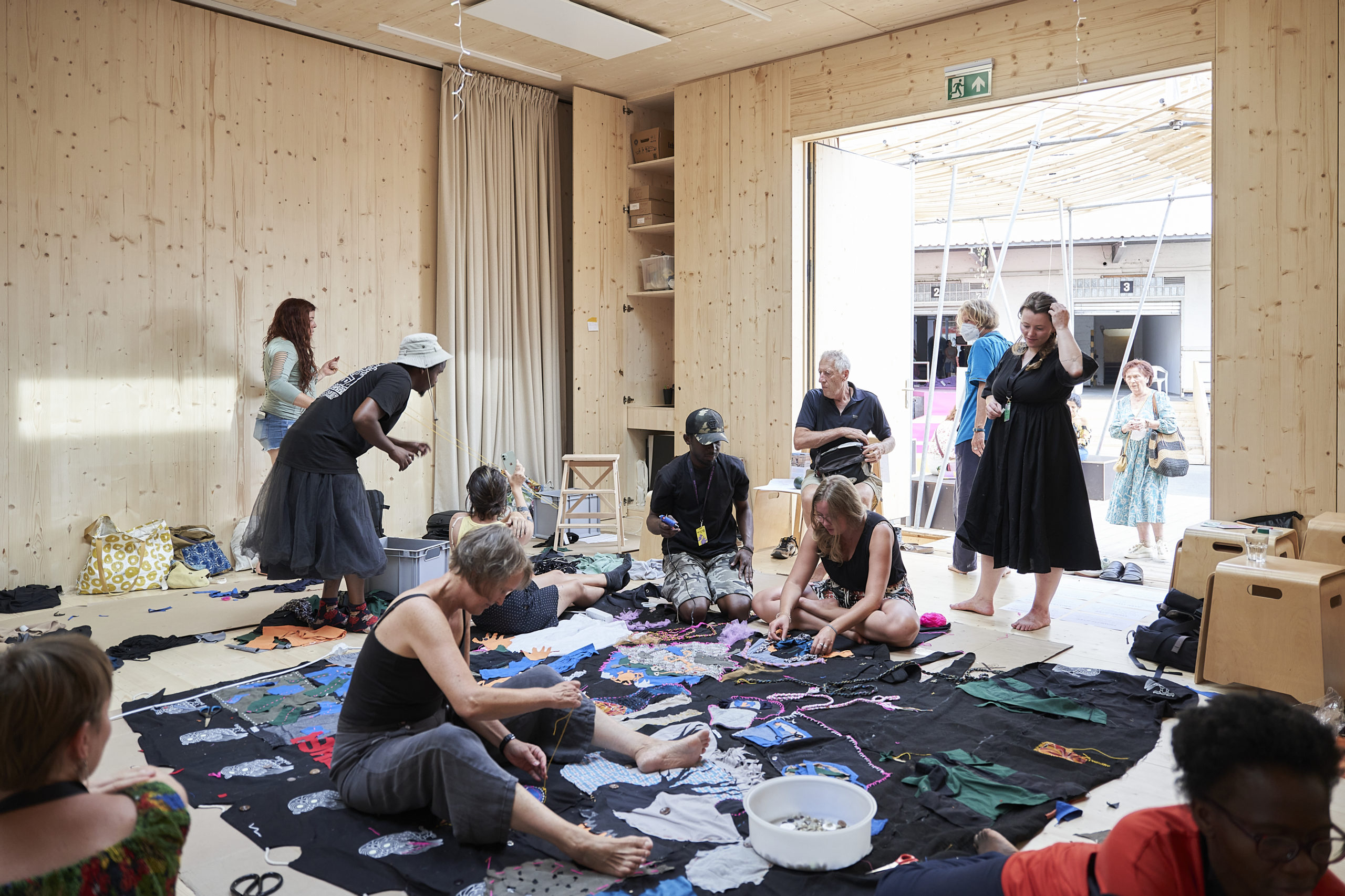
Photo: ©Nicolas Wefers, 2022.

Photo: ©Sello Majara, 2022.

Photo: ©Sello Majara, 2022.
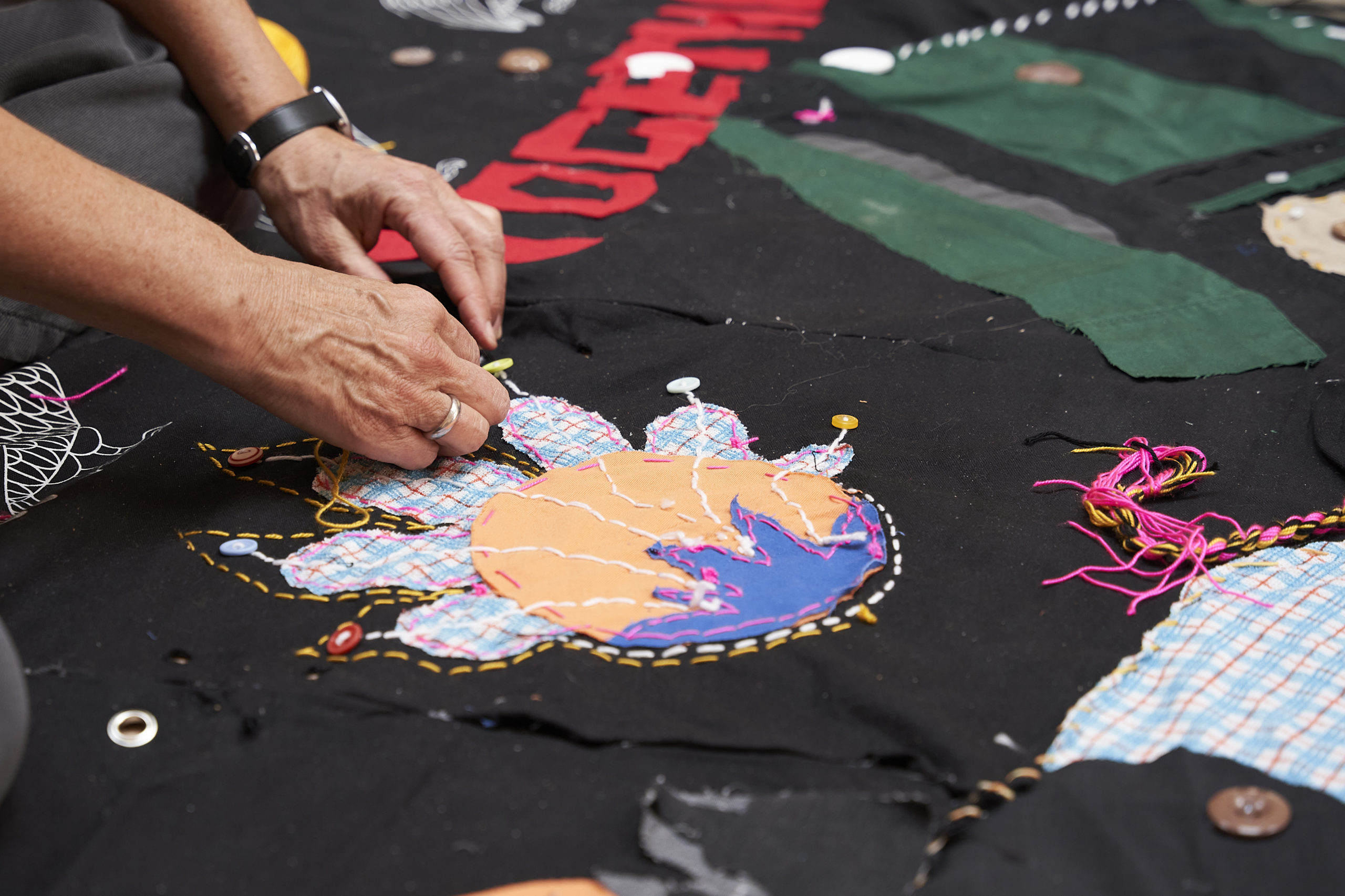
Photo: ©Nicolas Wefers, 2022.
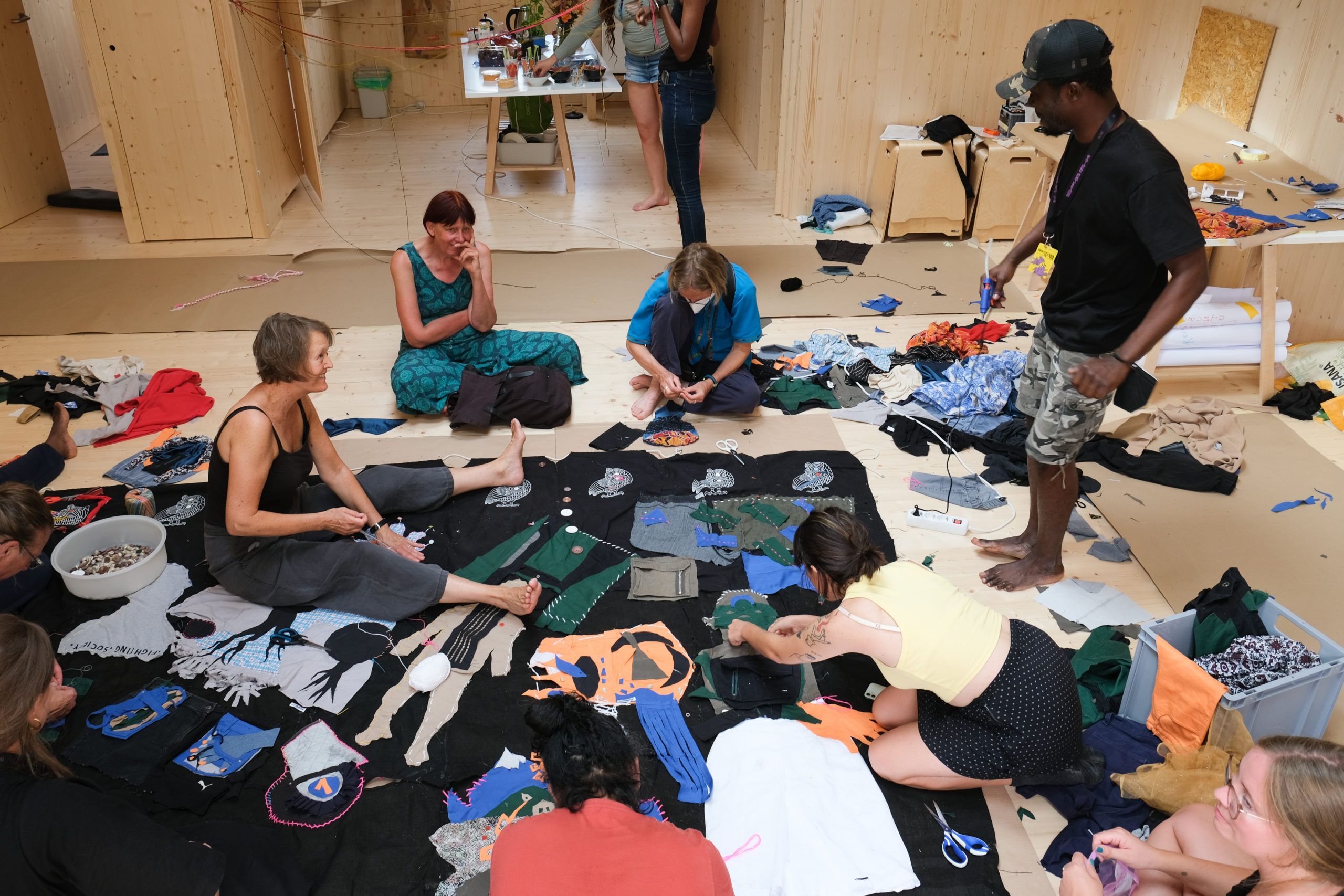
Photo: ©Sello Majara, 2022.

Photo: ©Sello Majara, 2022.

Photo: ©Nicolas Wefers, 2022.
African Alphabets – The story of writing in Africa
lecture + workshop
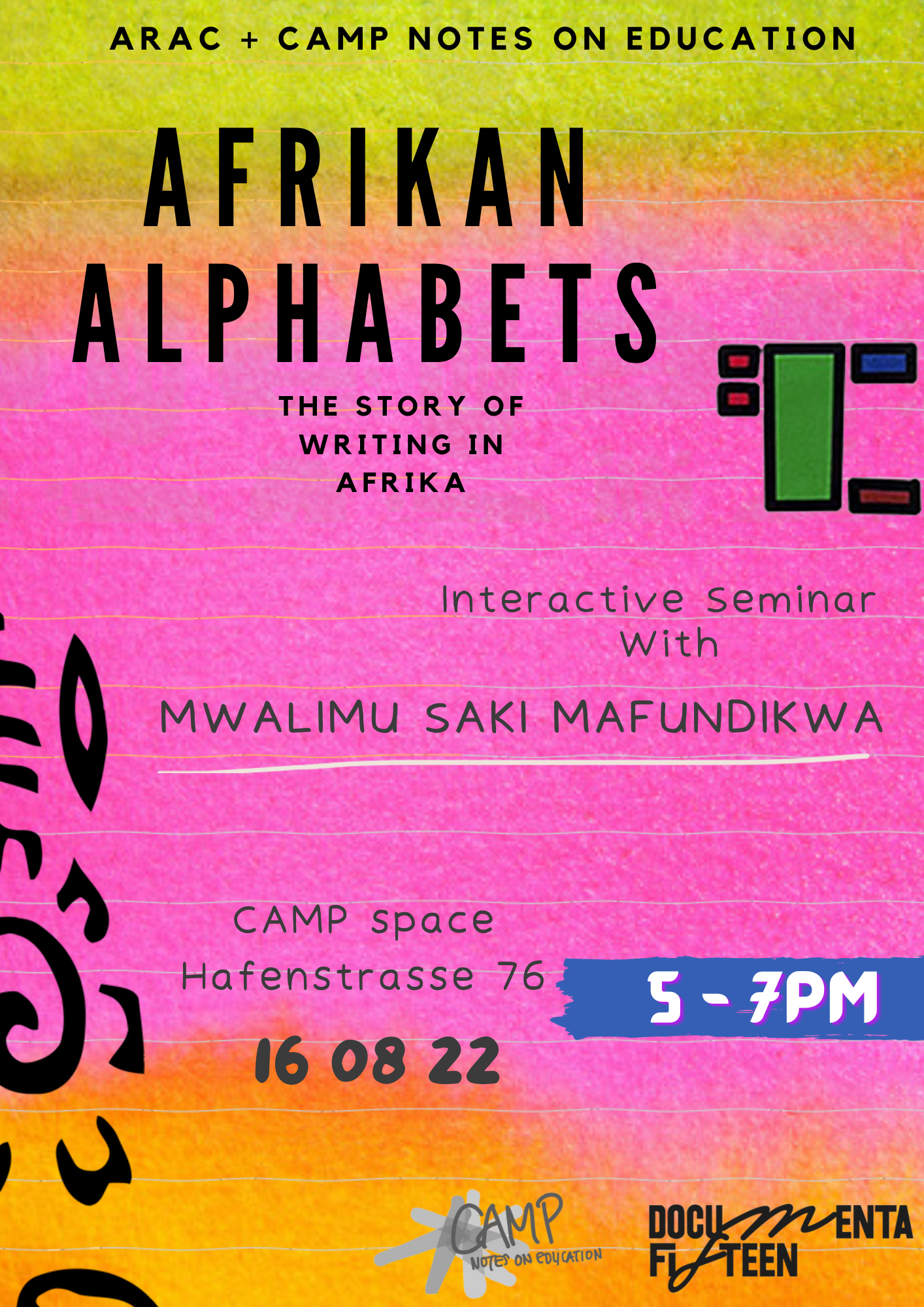
Poster Credit: ©Sello Majara, 2022
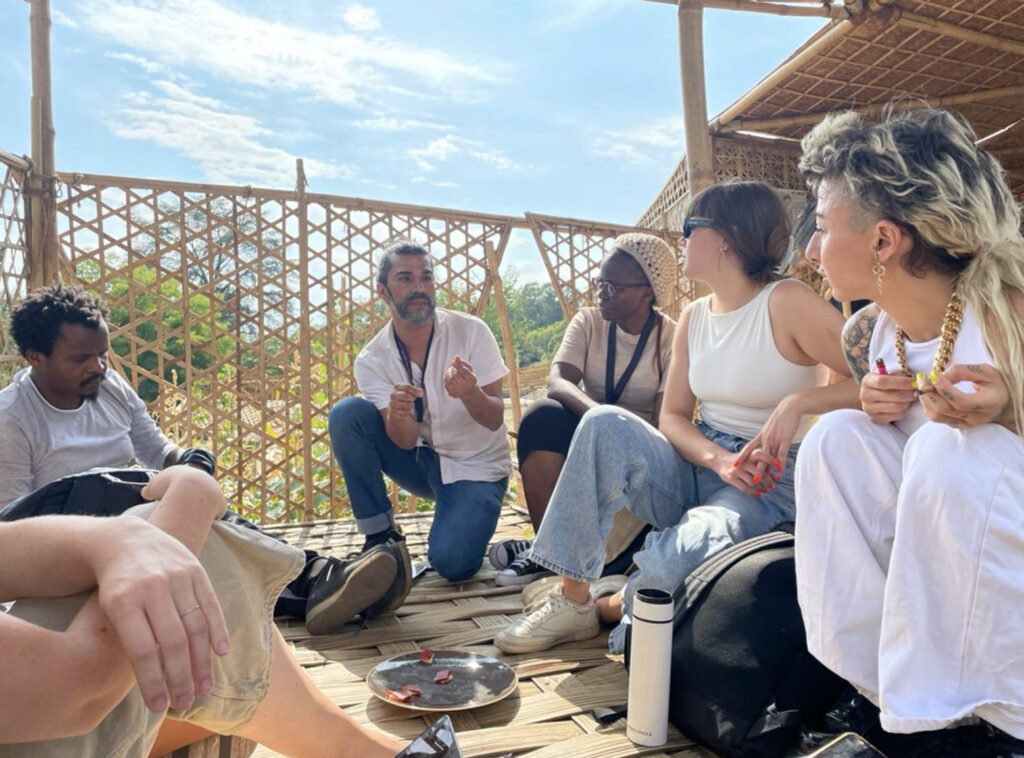
“Wanting to Unlearn will make you sit in a room in which you disagree with almost everyone on a particular subject because you really want to know/learn” – words from the EHA collective zine quoting Rosemary Esinam Damalie.
Crossing off the calendar pages of documenta fifteen, Arts Educators in Residence welcomed the second group of fellows. From July 27th to August 21st, they decided to form EHA collective to “develop a system of shared responsibilities that uses an ethics of care” to create the “freedom to create dangerously.”
Thank you to all of our fellows:
Ange Arthur KOUA
Asheda Dwyer
Brenda Jane Kibombwe
Chris Pavlakis
Hannah Abdullahi
Leman Sevda Dariciogl
Lennyn Santacruz
Raphael Daibert
Roma Estrada
Rosemary Esinam Damalie
R Stein Wexler
Sello Majara
Quotes in the text: EHA collective writing workshop
Title image: Fellows Slot 2 during a workshop at Britto Arts Trust “Pakghor – The Social Kitchen”, image: Esther Poppe
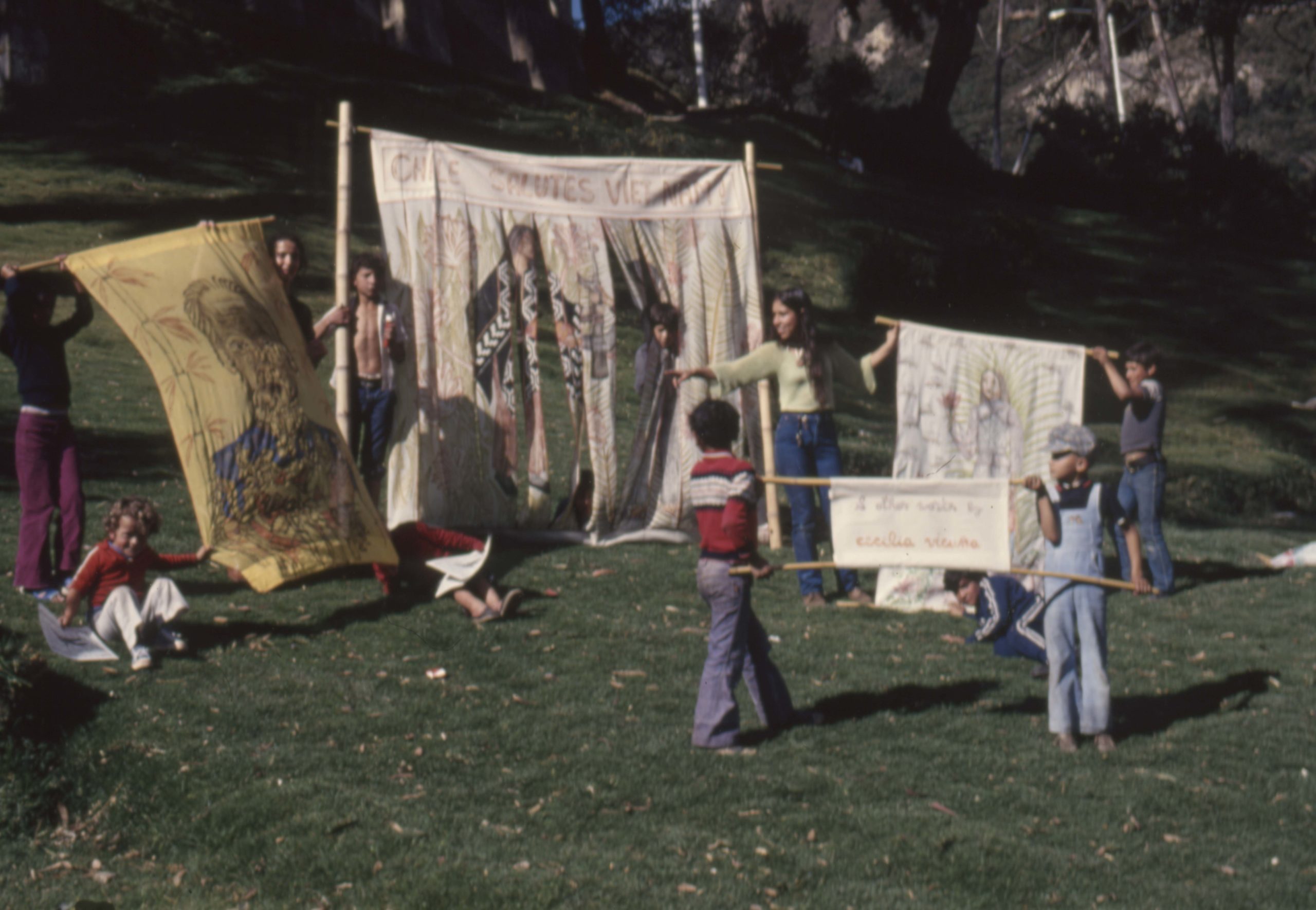 Cecilia Vicuña in a children’s workshop at the exhibition “Homenaje a Vietnam” (1977), Bogota. Courtesy: Cecilia Vicuña.
Cecilia Vicuña in a children’s workshop at the exhibition “Homenaje a Vietnam” (1977), Bogota. Courtesy: Cecilia Vicuña.
Hier klicken, um zur deutschen Version zu gelangen.
LA ESCUELA___ is an artist-run platform for radical learning and collective making, activating education as experimental art practice in public spaces. It offers transdisciplinary free on-site programs and online projects throughout Latin America. LA ESCUELA___ brings together artists, students, scholars, and local communities in the development of formative projects to approach the social realities of specific places; to act and learn upon them.
LA ESCUELA___ will work collectively with the Arts Educators in Residence fellows in residence on communal actions based on educational strategies, interrogating geopolitical issues from local perspectives. In this context, Mônica Hoff and Miguel Braceli from LA ESCUELA___ will organize a classroom in public spaces, departing from singular objects and the collective body to create site-specific learning environments.
LA ESCUELA___ is also growing as a trans-local network and living archive of artist-run practices and collaborative-based educational models. It is founded by the artist, architect, and educator Miguel Braceli and the international foundation Siemens Stiftung.
Mônica Hoff (Brazil, 1979) is an artist, curator, researcher and LA ESCUELA ___ Guest Scholar. She investigates the relations between curatorial, artistic, and educational practices and how they contribute, resist, and determine institutional policies and pedagogies. She holds a PhD in Contemporary Art Processes (Universidade do Estado de Santa Catarina – Brazil). She coordinated the education department of the Bienal do Mercosul (2006—2014) and participated in the curatorial team for its 9th edition, “Weather Permitting” (2013). Recent collaborative projects include: Laboratório de Curadoria, Arte e Educação (2014—2019); Embarcação, Escola Extraordinária (2016—2018); Corazón Pulmones Hígado (2019—2020); Pedagogia em Público, and the Domingo’s Group (ongoing).
Miguel Braceli (Venezuela, 1983) is an artist, architect, educator, and founder of LA ESCUELA___. His work is focused on participatory art projects in public space; at the intersection of art, architecture, and social practices; exploring geopolitical and local conflicts. Most of these projects have been large-scale works developed in Latin America, Europe, and the United States. He has led educational projects with institutions such as the MoMA, Washington Projects for the Arts, Matadero Madrid, among others. His most recent recognitions include Skowhegan Fellow (2022), AIM Bronx Museum Fellow (2022), Future Architecture Fellow (2019), and Young Artist Award of the Principality of Asturias (2018). He is currently a Fulbright Scholar working and living in New York.
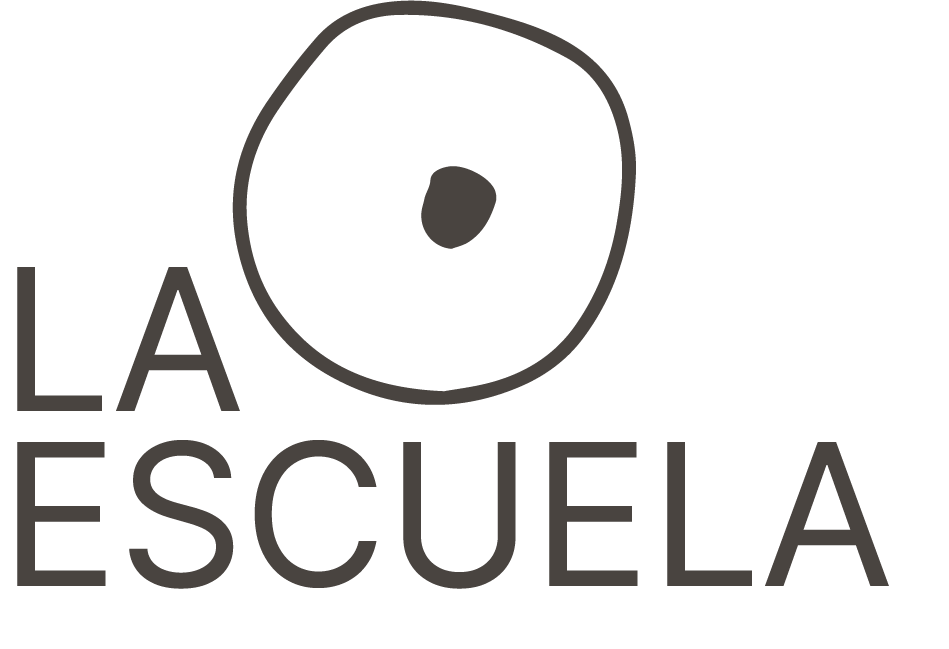
LA ESCUELA___ ist eine künstler*innenbasierte Plattform für radikales Lernen und kollektive Kreation, die Bildung als experimentelle Kunstpraxis in öffentlichen Räumen aktiviert. Das hybride Projekt bietet online und on-site kostenlose Programme in ganz Lateinamerika mit transdisziplinärer Ausrichtung. Dabei bringt LA ESCUELA___ Künstler*innen, Student*innen, Wissenschaftler*innen und lokale Gemeinschaften zusammen, um gemeinsam Projekte zu entwickeln: Sie setzen sich mit den sozialen Gegebenheiten bestimmter Orte auseinander, um aus ihnen zu lernen und zu handeln.
LA ESCUELA___ wird kollektiv mit den Arts Educators in Residence Fellows an gemeinschaftlichen Aktionen arbeiten, die auf Bildungsstrategien beruhen und geopolitische Themen aus lokaler Perspektive beleuchten. Dafür werden Mônica Hoff und Miguel Braceli von LA ESCUELA___ ein Klassenzimmer im öffentlichen Raum organisieren, um ausgehend von einzelnen Objekten und dem kollektiven Körper ortsspezifische Lernumgebungen zu kreieren.
LA ESCUELA___ ist darüber hinaus ein wachsendes translokales Netzwerk und lebendiges Archiv für von Künstlern betriebene Praktiken und kollaborative Bildungsmodelle. Es wurde vom Künstler, Architekten und Pädagogen Miguel Braceli und der internationalen Siemens Stiftung gegründet.
Mônica Hoff (Brasilien, 1979) ist Künstlerin, Kuratorin, Forscherin und Gastwissenschaftlerin von LA ESCUELA___. Sie untersucht die Beziehungen zwischen kuratorischen, künstlerischen und pädagogischen Praktiken und deren Beiträge zur institutionellen Politik und Pädagogik beitragen, ihr widerstehen und sie bestimmen. Sie hat einen Doktortitel in zeitgenössischen Kunstprozessen (Universidade do Estado de Santa Catarina – Brasilien). Sie koordinierte die Bildungsabteilung der Bienal do Mercosul (2006-2014) und war Mitglied des Kuratorenteams für die 9. Ausgabe der Bienal do Mercosul “Weather Permitting” (2013). Zu ihren jüngsten Gemeinschaftsprojekten gehören: Laboratório de Curadoria, Arte e Educação (2014-2019); Embarcação, Escola Extraordinária (2016-2018); Corazón Pulmones Hígado (2019-2020); Pedagogia em Público und die Domingo’s Group (laufend).
Miguel Braceli (Venezuela, 1983) ist Künstler, Architekt, Pädagoge und Gründer von LA ESCUELA___. Seine Arbeit umfasst vor allem partizipatorische Kunstprojekte im öffentlichen Raum an der Schnittstelle von Kunst, Architektur und sozialen Praktiken, die sich mit geopolitischen und lokalen Konflikten auseinandersetzen. Die meisten dieser Projekte sind großformatige Arbeiten, die in Lateinamerika, Europa und den Vereinigten Staaten entwickelt wurden. Er hat Bildungsprojekte mit Institutionen wie dem MoMA, Washington Projects for the Arts, Matadero Madrid und anderen geleitet. Zu seinen jüngsten Auszeichnungen gehören Skowhegan Fellow (2022), AIM Bronx Museum Fellow (2022), Future Architecture Fellow (2019) und Young Artist Award of the Principality of Asturias (2018). Er ist derzeit Fulbright-Stipendiat und lebt und arbeitet in New York.


With the opening of documenta fifteen, Arts Educators in Residence welcomed the first slot of fellows, co-inhabiting the architectural space, “flying house,” from June 21st to July 18th. Centering time through dancing, cooking, workshops, sharing practices, writing and sewing sessions. Questions on how to reflect and reengage in reclaiming the knowledge systems and cultural imaginations that counter what capitalism and patriarchy have sought to erase under the conditions of modernity and coloniality were negotiated through documenta fifteen’s lumbung values.
Thank you to all of our fellows:
Ana Raquel Machava
Anastasia Shestak
Denisse Vega de Santiago
Ece Pazarbasi
Jaime Ruíz Martínez
juca fiis
Sharareh Bajracharya
Simona Dvorák
Thulie Gamedze
Yim Sui Fong
Title image: A pokemon convention @ a boring symposium, image: the fellows of Arts Educators in Residence listed above, 2022
Residency Periods:
June / July 2022 : 21.06. – 18.07.
July / August 2022 : 25.07. – 21.08.
August / September 2022: 29.08. – 25.09.
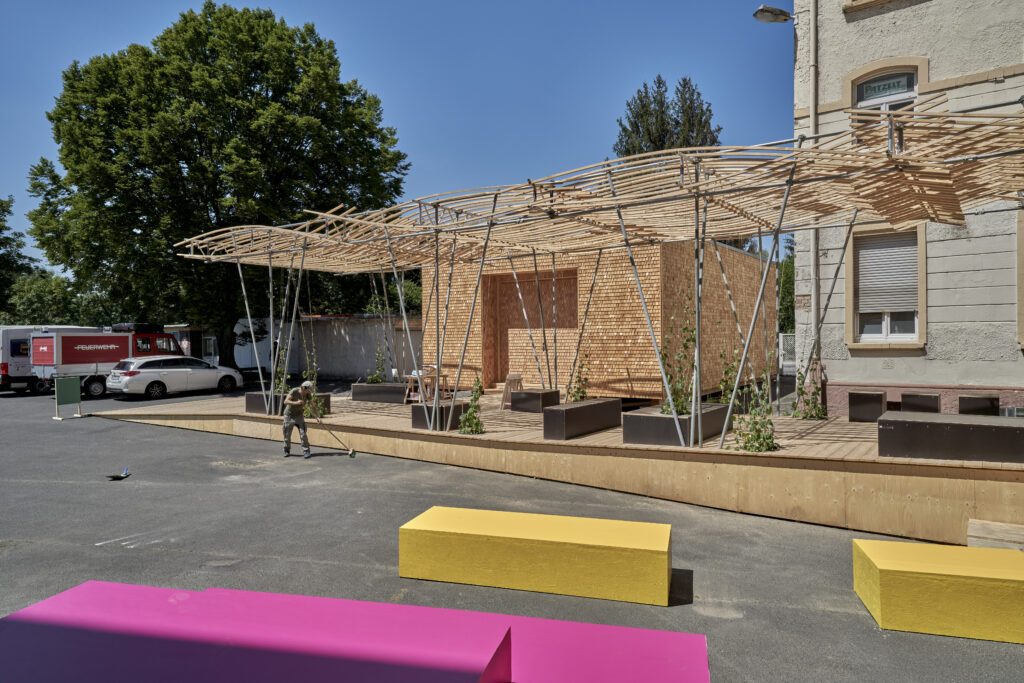
CAMP notes on education is a network of learners and teachers in the fields of arts, arts history, aesthetics, cultural policy and cultural education that emerged from documenta fifteen’s Education and Art Mediation department. One of the manifestations of CAMP notes on education will unfold through the Arts Educators in Residence program, inviting practitioners form the fields of Arts Education to Kassel for one of three residency periods of 4 weeks each taking place during the 100 days of documenta fifteen.
Fellows are invited to share their approaches, develop pedagogical frameworks and realize their own educational projects during their stay. Arts Educators in Residence maintains the goal to provide a liminal space for a multiplicity of perspectives, autonomous, non-institutional, embodied and intergenerational forms of collective learning and re-imagine educational futures.
CAMP notes on education encourages an exchange of knowledges, approaches, and experiences among participants and nurture collective capacities that appear at the intersection of practice and communing. This is an invitation to connect to experiences and ponder upon new questions, critical and cross-cultural inquiries that interconnect with both practical and theoretical threads. The fellows will work together to reflect collectively on their practices and evaluate their actions in collaborative structures.
Arts Educators in Residence is a full-time, tuition-free experimental fellowship program. Each fellow will have their travel (airfare, train, car, etc.), including VISA costs and accommodation in Kassel covered. Fellows will receive a per diem of 20,- € per day.
We assist applicants with their VISA procedure & application. Additionally, we will support the applicant with local quarantine regulations upon return to their country of residence. The scholarship also covers a PCR test for entry into Germany.
Please note that collectives with two representatives can also apply. Send two separate application forms in one email and let us know that you are applying as a collective, providing an insight into your collaborative practice.
We also encourage applicants with children to apply. In addition to travel support, we will provide assistance for fellows with children.
Applications should be submitted in English, using the application form provided.
For any further questions regarding your application procedure or inquiries directly related to the program Arts Educators in Residence please contact camp@documenta.de.
CAMP notes on education wishes to acknowledge the valuable support of the Crespo Foundation.

Am 8. Juni landet „Das fliegende Künstlerzimmer“ der Frankfurter Crespo Foundation auf der documenta fifteen, Hafenstraße 76, und wird im Rahmen des Arts Educators in Residence Programm zum CAMP workspace.
Mehr zum Programm “Das fliegende Künstlerzimmer” der Frankfurter Crespo Foundation unter: www.fliegendes-kuenstlerzimmer.de.
Eine der vielen Manifestationen von CAMP notes on education wird sich durch das Arts Educators in Residence Programm entfalten, das Kultur- und Kunstvermittler*innen, Lehrer*innen, Kulturarbeiter*innen, Community Facilitators und Künstler*innen aus verschiedenen globalen Kontexten zusammenbringt, um alternative und regenerative Methoden an den Schnittstellen von Kunst, Theorie und Bildung neu zu denken und mitzugestalten. Während der 100 Tage werden die eingeladenen Fellows in Gruppen für jeweils einen Monat den CAMP workspace aktivieren, in kollaborativen Strukturen ihre Praxis reflektieren und im Rahmen der documenta fifteen Vermittlungsformen erproben können. Finanziert wird das Residency Programm von der Crespo Foundation.
Darüber hinaus wird auch der CAMP workspace von der Crespo Foundation gestellt – ein Raum, der im Rahmen des Crespo-Programms „Das fliegende Künstlerzimmer“ entwickelt wurde und normalerweise als mobiles artist-in-residence-Atelier an Schulen im ländlichen Hessen gastiert. Arts Educators in Residence verfolgt das Ziel, einen Raum der Vermittlung für eine Vielzahl von Perspektiven, autonomen, nicht-institutionellen, verkörperten und generationenübergreifenden Formen des kollektiven Lernens zu schaffen und so zivilgesellschaftliche Prozesse im künstlerischen Feld, wie auch in dem der Bildung mitzugestalten.
Am 8. Juni landet „Das fliegende Künstlerzimmer“ der Frankfurter Crespo Foundation auf der documenta fifteen, Hafenstraße 76, und wird im Rahmen des Arts Educators in Residence Programm zum CAMP workspace.
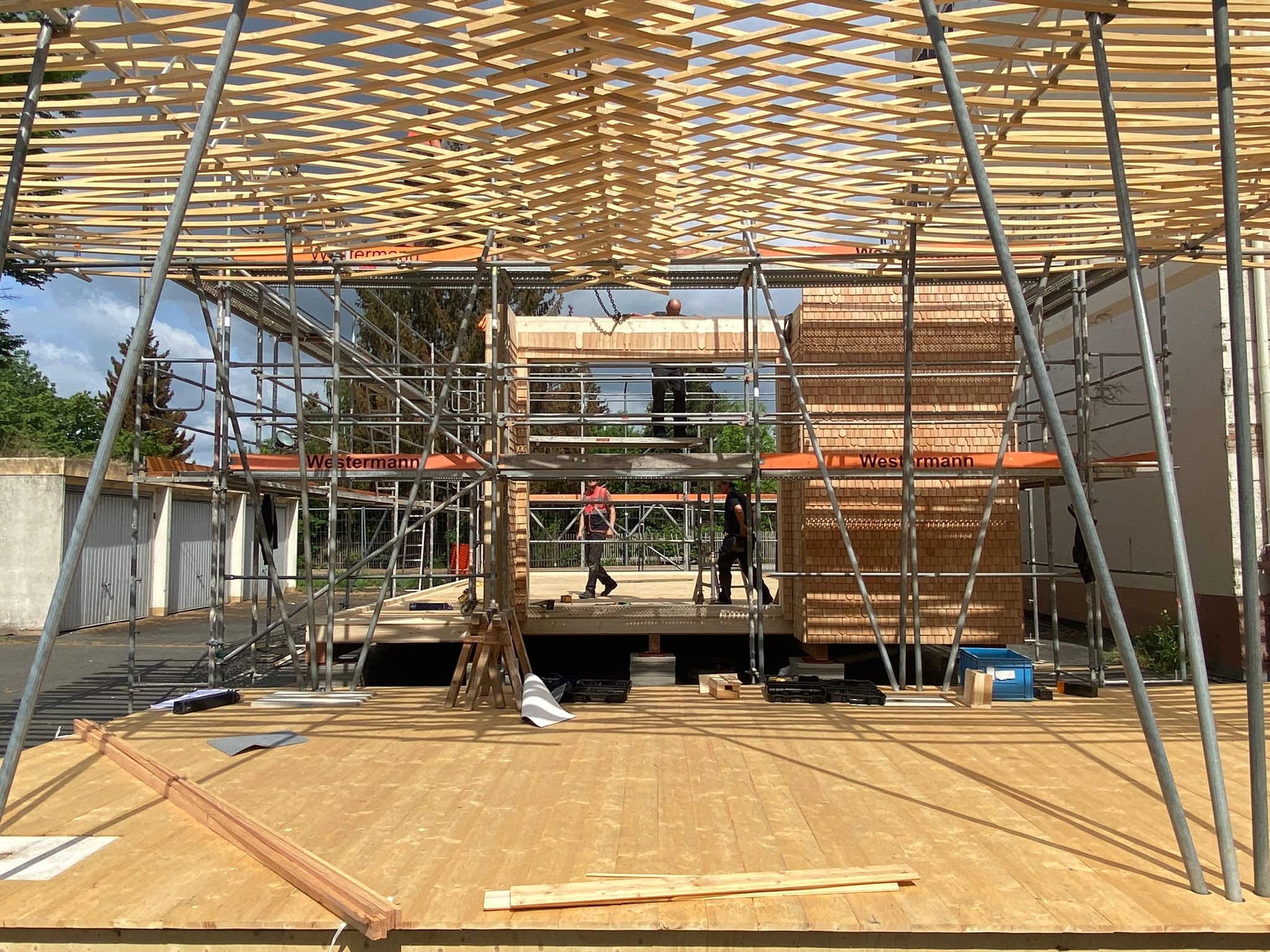
Aufbau des CAMP workspace, Hafenstraße 76, Foto: Lukas Wegwerth, 2022
Seit 2018 konzentriert sich die Crespo Foundation mit ihrem Programm „Das fliegende Künstlerzimmer“ auf künstlerische Praktiken und Methoden der Kulturellen Bildung im ländlichen Raum. Sie bringt Künstler*innen an Schulen – in enger Allianz mit dem Hessischen Kultusministerium und dem Hessischen Ministerium für Wissenschaft und Kunst sowie mit Schulen in ländlichen Regionen Hessens und den zugehörigen Landkreisen als verantwortlichen Schulträgern. Da der*die Künstler*in auf dem Schulhof einer Schule im Fliegenden Künstlerzimmer lebt und arbeitet, kommen die Schüler*innen in unmittelbaren Kontakt mit kreativen Prozessen. „Das fliegende Künstlerzimmer“ wird dabei in Form eines mobilen Wohnateliers mitgeliefert und als Freiraum für bis zu zwei Jahre auf dem Schulgelände verankert, um danach an die nächste Schule weiterzufliegen. Das „fliegende Künstlerzimmer“ und seine Bewohner*innen eröffnen der Schulgemeinschaft einen neuen Raum und erlauben die Begegnung mit künstlerischen Impulsen, die langfristig auch über die Verweildauer des mobilen Ateliers hinaus zur eigenen kulturellen Schulentwicklung beitragen. Die „Landung“ eines Künstlerzimmers bedeutet aber auch, dass die Schule sich als System öffnet und ihre Strukturen anbietet, um das transformatorische Potential ausschöpfen zu können. Denn die ästhetischen Impulse werden von den Künstler*innen in Zusammenarbeit mit Lehrkräften aller Fächer gemeinsam erarbeitet und im schulischen Curriculum angewendet. Darüber hinaus machen die Künstler*innen offene Atelierangebote, die von den Schüler*innen selbstständig besucht und mitgestaltet werden können. Es ist ein lernendes Programm, das sich mit jedem neuen Standort weiterentwickelt, um die Bedürfnisse von Schulen und Künstler*innen immer wieder neu zu überprüfen und in der Praxis bestmöglich zu berücksichtigen.
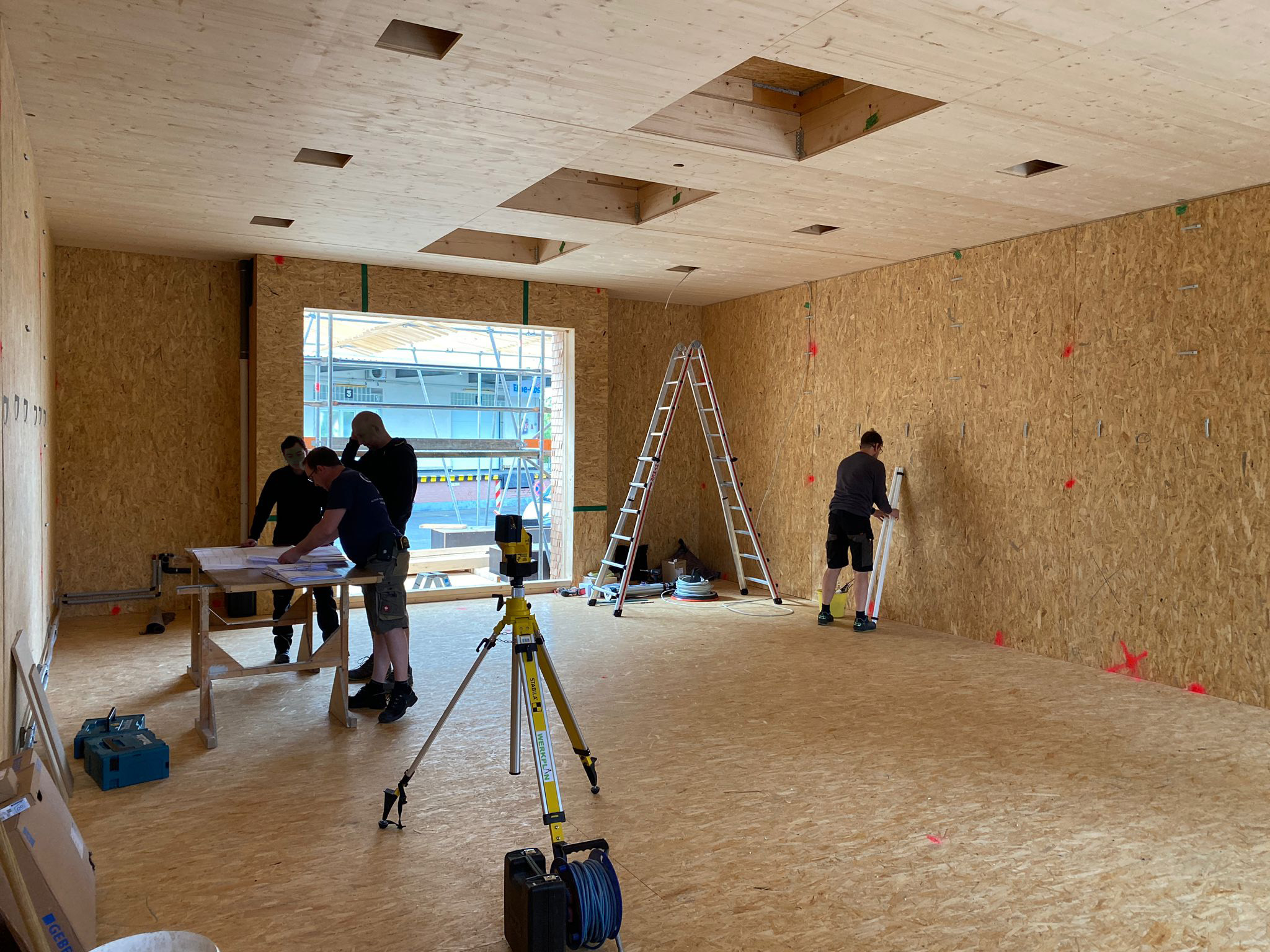 Aufbau des CAMP workspace, Hafenstraße 76, Foto: Lukas Wegwerth, 2022
Aufbau des CAMP workspace, Hafenstraße 76, Foto: Lukas Wegwerth, 2022
Was vor vier Jahren mit einem ersten Piloten begann, hat sich bereits verdreifacht: Ab diesem Sommer werden erstmals sechs fliegende Künstlerzimmer an ländlichen Schulen in Hessen landen.
Die Architekten des mobilen Ateliers, Prof. Nikolaus Hirsch und Prof. Dr. Michel Müller, stellen sich mit ihrem Entwurf der Herausforderung, einen flexiblen Raum zu entwickeln: Die Ästhetik eines klassischen Künstler*innen-Ateliers spielt dabei eine genauso wichtige Rolle wie die Möglichkeit, darin zu wohnen und den Gesamtraum gleichzeitig für verschiedene kreative Formate oder Arbeitssituationen flexibel nutzbar machen zu können. „Vom ersten Prototypen bis zum jetzigen, unter anderem für die documenta realisierten Bau, sind immer wieder Verbesserungen vorgenommen worden. Das fliegende Künstlerzimmer bleibt nie gleich, sondern ist immer in Bewegung“, so Prof. Nikolaus Hirsch und Prof. Dr. Michel Müller. Prof. Christiane Riedel, Vorständin der Crespo Foundation, ergänzt: „Der Crespo Foundation war es wichtig, einen Raum zu schaffen, der ganz von dem*der Künstler* in her gedacht ist: einen Raum für seine*ihre eigene künstlerische Entfaltung und für die Entwicklung und Erprobung neuer Konzepte der kulturellen Bildung an Schulen.“
Arts Educators in Residence wird unterstützt durch die Förderung der Crespo Foundation.
